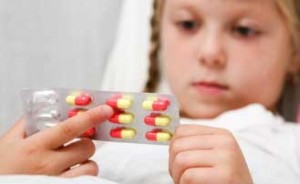The off-label use of drugs in children is the rule, not the exception. Benjamin, et al., report that three-fourths of the prescription drugs on the market do not have labelling indications for children, leaving their use in children to physicians’ discretion1. Furthermore, almost 80 percent of hospitalised children get drugs that are not approved for paediatric use.
What are the consequences of this? According to Shah, et al., “Using drugs that have been insufficiently studied in children has contributed to adverse outcomes, which have been documented in the medical literature.”2 This leads to a guessing game that can most kindly be characterized as “experimental,” if not downright reckless. As Nightingale states, “Physicians who treat children often prescribe drugs for off-label uses because little information is available from well-controlled studies on dosage, formulation, effectiveness and safety in children.”3
The clinical implications of off-label prescribing are significant. Seventy-three percent of off-label uses lack evidence of clinical efficacy. The greatest disparity between supported and unsupported off-label uses is found among prescriptions for psychiatric uses and allergies4.
Adverse drug reactions are a serious problem in paediatric medicine. The incidence of preventable adverse drug reactions in children is similar to that found in adult literature. More than half of the reported adverse drug reactions resulted in treatment intervention and/or temporary patient harm5. A study found that in-hospital medical errors are responsible for the deaths of nearly 4,500 children in the United States every year7. “The bottom line is that none of these events should have happened,” said Dr. Marlene R. Miller, the study’s lead author and director of quality and safety initiatives at the Johns Hopkins Children’s Center in Baltimore7.
There were 3.8 million children under the age of 19 hospitalized in the United States in 1997. This means that in one year, there are 79,000 children (2 percent of 3.8 million children) admitted to the hospital because of adverse drug reactions, and 31,000 of these children suffer life-threatening adverse reactions8.
If these figures seem shocking, says clinical pharmacologist Alastair J.J. Wood, an associate dean at Vanderbilt Medical School in Nashville, consider that some studies suggest the FDA Adverse Events Reporting System database may capture only up to 10 percent of drug-induced side effects and deaths; “maybe even less than 1 percent.”9 That’s right. The numbers previously cited may be one or two orders of magnitude too low.
- Benjamin DK, et al. Peer-reviewed publication of clinical trials completed for pediatric exclusivity. JAMA, 2006;296:1266-73.
- Shah S, et al. Off-label drug use in hospitalized children. Arch Pediatr Adolesc Med, March 2007.
- Nightingale SL. Off-label use of prescription drugs. Am Fam Physician, Aug. 1, 2003;68(3):425-7.
- Radley DC, et al. Off-label prescribing among office-based physicians. Arch Intern Med, 2006;166:1021-6.
- Temple ME, et al. Frequency and preventability of adverse drug reactions in paediatric patients. Drug Safety, 2004;27(11):819-29.
- Miller MR, Zhan C. Pediatric patient safety in hospitals: a national picture in 2000. Pediatrics, June 2004;113(6):1741-6.
- Harding A. Study finds US paediatric medical errors kill 4,500 children a year. BMJ, 2004;328(7454):1458.
- Miller MR, Elixhauser A, Zhan C. Patient safety events during pediatric hospitalizations. Pediatrics, June 2003;111:1358-66.
- Elias M. “New Antipsychotic Drugs Carry Risks for Children.” USA Today. May 2, 2006.

